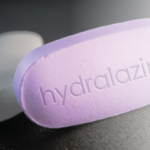A trial on the IL-17A inhibitor, secukinumab, is the first of a biologic therapy in axSpA that includes patients who didn’t respond well to TNF inhibitors, Dr. Gensler noted. Patients showed a significantly greater response than placebo at 16 weeks, but some data suggest those with Crohn’s disease did worse on the drug than on placebo. IL-17A, she said, plays an important role in gut homeostasis.
She said that for now, she’d remain cautious with the drug in these patients, and her personal preference is to use 17A inhibitors only in those with axSpA who don’t have inflammatory bowel disease.
She said it remains somewhat unclear whether using secukinumab in patients predisposed to gut inflammation will make their inflammatory disease worse. “Long-term data will help unravel this,” she said.
Meniscus Tear & Adhesive Capsulitis

Dr. Senter
Carlin Senter, MD, associate professor of medicine at orthopedics at UCSF, gave rheumatologists guidance on navigating sports medicine cases. For starters, when evaluating a patient for a possible meniscus tear, she prefers to get a positive finding on at least three out of four tests before sending a patient for a knee MRI: the joint line tenderness test, the McMurray, the Thessaly and the squat test. The sensitivity of each of these tests is fairly low, so positive findings on multiple tests will yield more accurate results, she said.
The joint line tenderness test involves palpating between the femur and the tibia, looking for only joint line tenderness and not bony tenderness, which would instead indicate osteoarthritis (OA). The McMurray involves placing a hand over the patient’s knee with the knee flexed and turning the toes in and out. In the Thessaly, the patient stands on the affected knee, with their foot planted while rotating and the clinician looks for pain medially or laterally during the pivoting. On the squat test, the clinician simply looks for pain medially or laterally while the patient squats, holding on to the examiner if needed.
Dr. Senter commonly faces situations in which she must determine whether to recommend surgery for a patient with medial compartmental OA and a meniscus tear. Of the four most recent studies on this topic, three showed no significant difference between arthroscopic partial meniscectomy and physical therapy (PT) vs. PT alone.
One study limitation: The studies allowed crossover, and 30% of patients did switch from PT to surgery, she said. Crossing over was associated with a shorter duration of symptoms and a higher initial pain score.


